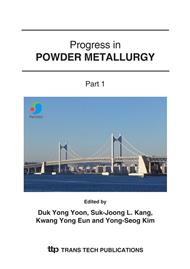p.1489
p.1493
p.1497
p.1501
p.1505
p.1509
p.1513
p.1517
p.1521
Structural and Thermal Properties of Hot Pressed Cu/C Matrix Composites Materials Used for the Thermal Management of High Power Electronic Devices
Abstract:
In order to obtain materials for electronic applications that exhibit both excellent thermal conductivity and low coefficient of thermal expansion (CTE), copper matrix composites have been reinforced by short high modulus graphite fibers. The lack of fiber/matrix interaction prevents any degradation of the carbon reinforcement during the elaboration steps and the normal use of these materials. Elaboration conditions, such as mixing conditions of the short carbon fibers and the copper powder, dimension and shape of the two powders, and finally densification atmosphere, temperature, pressure and time, have been optimized. Main parameters involved in the thermal properties of the Cu/C composite materials have been analyzed and adjusted. CTE is mainly related with the carbon volume fraction; CTE ranging from 9 to 13 10-6/°C can be reproductively obtained with carbon volume fraction ranging from 50% to 20%. Thermal conductivity properties are more complex and are linked mainly with 1) the porosity level inside the material, and 2) the orientation, properties and volume fraction of the carbon fibers. For short carbon fibers, in plane thermal conductivity ranging from 200 to 550 W/mK have been reproductively measured associated with thermal conductivity through-thickness ranging from 150 to 300 W/mK.
Info:
Periodical:
Pages:
1505-1508
Citation:
Online since:
January 2007
Authors:
Keywords:
Price:
Сopyright:
© 2007 Trans Tech Publications Ltd. All Rights Reserved
Share:
Citation:


